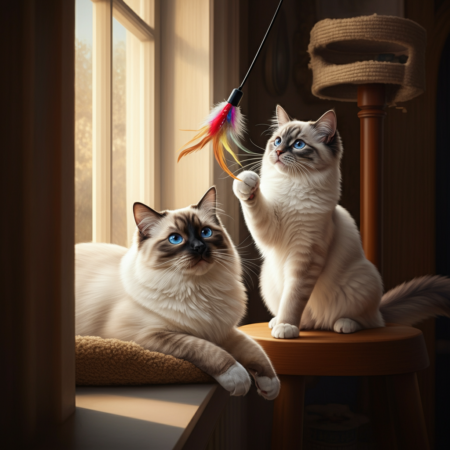Africa is home to some of the most fascinating wildlife on the planet, and horned animals are among its most iconic and diverse inhabitants. From the graceful antelopes of the savannas to the powerful rhinoceroses and even horned reptiles, these creatures captivate wildlife enthusiasts and conservationists alike. Horns are more than just a physical feature—they play critical roles in defence, dominance, and survival.
This guide explores the incredible variety of African animals with horns, their unique adaptations, and the challenges they face in today’s rapidly changing world.
- Antelopes with Horns
- 1. Kudu
- 2. Sable Antelope
- 3. Oryx
- 4. Bongo
- 5. Eland
- 6. Wildebeest
- Rhinos: Giants with Keratin Horns
- Reptiles with Horns
- 1. Saharan Horned Viper
- 2. Jackson’s Horned Chameleon
- Threats and Conservation
- Threats
- Conservation Efforts
- FAQs About African Animals with Horns
- What African animal has spiralled horns?
- What is the African beast with a horn?
- Why are rhino horns so valuable?
- Are antelope horns different from rhino horns?
- How can I help protect horned animals in Africa?
- Protecting Africa’s Majestic Horned Creatures
Antelopes with Horns
1. Kudu
The KuduKudu, divided into Greater and Lesser Kudu species, stands out for its majestic spiralled horns. These horns can grow up to six feet long in the Greater Kudu, making them one of the most striking in the animal kingdom.
Functionality: Male kudus use their horns in displays of dominance to fend off predators. Their spiralled shape adds strength and ensures they don’t break easily.
2. Sable Antelope
Known for their sleek dark coats and elegant, curved horns, sable antelopes are considered one of the most beautiful antelope species. Their horns can reach up to five feet long, curving gracefully backwards like a scimitar.
Role in Nature: These horns are critical for self-defence and dominance battles between males. The sable’s striking appearance makes it a favourite among wildlife photographers and safari-goers.
3. Oryx
Its pale coat easily recognizes the oryx with contrasting dark markings and long, straight, annulated horns. These nearly symmetrical horns are perfectly adapted for their arid desert habitats.
Adaptation: The oryx can endure extreme desert conditions, and their horns are formidable weapons against predators.
4. Bongo
The bongo, a rarely seen forest antelope, is notable for its reddish-brown coat with white stripes and spiralled horns in both males and females. Bongos are shy yet striking creatures found primarily in the dense forests of West and Central Africa.
Unique Feature: Both genders possess long, smooth, inward-spiralling horns, and their muscular build allows them to traverse dense undergrowth easily.
5. Eland
The eland, one of Africa’s largest antelopes, possesses V-shaped horns that twist elegantly at the base. Though not the most dramatic horns among African antelopes, their functionality cannot be understated.
Role in Defense: These horns are used for defence and to establish dominance during mating competitions.
6. Wildebeest
Perhaps best known for their migratory herds across the grasslands, wildebeests feature forward-curving horns that give them a unique silhouette.
Mating Displays: Their horns play a significant role during dramatic mating displays, as males compete for territory and mates.
Rhinos: Giants with Keratin Horns
Rhinos are among the most iconic horned mammals in Africa. Unlike antelopes, their horns are made entirely of keratin—the same material as human hair and nails. These structures grow continuously throughout the rhino’s life.
Key Species of African Rhinos:
- White Rhino (Ceratotherium simum): Distinguished by their wide mouths adapted for grazing.
- Black Rhino (Diceros bicornis): Smaller and more elusive, characterized by their prehensile upper lips for browsing shrubs.
Threats: Unfortunately, rhinos face grave threats from poaching due to the high market value of their horns. Myths about their medicinal properties fuel an illegal trade that has brought several rhino subspecies, such as the Northern White Rhino, to the brink of extinction.
Reptiles with Horns
1. Saharan Horned Viper
This small yet fierce reptile earns its name from the horn-like structures above its eyes. These protrusions make it one of the most distinctive desert dwellers in North Africa.
Adaptation: Its horns likely help blend into the sandy terrain and provide camouflage against predators and prey.
2. Jackson’s Horned Chameleon
Native to East Africa, this small reptile stands out for the three distinct horns protruding from its face. The horns are most prominent in males and likely play a role in mating displays.
Unique Trait: The chameleon’s horns add to its charm, making it a favourite among wildlife enthusiasts.
Threats and Conservation
African animals with horns face numerous threats. Human activities, climate change, and poaching are some of the significant factors endangering these species.
Threats
- Poaching: Rhino and antelope horns are highly sought after for their perceived medicinal or ornamental value. This has led to devastating declines in their populations.
- Habitat Loss: Deforestation and land development are destroying the habitats of species like the bongo and eland.
- Climate Change: Droughts and shifting habitats directly impact food and water availability for many horned animals.
Conservation Efforts
- Anti-Poaching Patrols: Conservation organizations deploy patrols and technology to protect rhinos and antelopes from poachers.
- Habitat Restoration: Efforts to preserve and expand natural habitats help ensure the long-term survival of these species.
- Community Awareness: Educational campaigns encourage local communities to value and protect their native wildlife.
FAQs About African Animals with Horns
What African animal has spiralled horns?
The KuduKudu, particularly the Greater Kudu, is famed for its long, spiralled horns that can grow up to six feet. These horns are used for display and self-defence.
What is the African beast with a horn?
The oryx, a large desert antelope, is often called the “African beast with a horn.” Its long, straight horns can resemble the mythical unicorn when viewed in profile.
Why are rhino horns so valuable?
Rhino horns are wrongly believed to have medicinal properties in some cultures. Their illegal trade is a major driver of rhino poaching.
Are antelope horns different from rhino horns?
Yes. Antelope horns are bone-covered in keratin and do not regrow if broken, whereas rhino horns are made entirely of keratin and grow continuously.
How can I help protect horned animals in Africa?
You can support conservation organizations, raise awareness about poaching, and advocate for stricter wildlife protection laws.
Protecting Africa’s Majestic Horned Creatures
African animals with horns represent the incredible diversity and beauty of the continent’s wildlife. From the elegant spiral of a kudu’s horns to the power of a rhino’s keratin structure, these animals play a crucial role in Africa’s ecosystems.
Conserving these species is vital—not just for the animals themselves, but also for the health of our planet and the balance of nature. By supporting conservation efforts and raising awareness, we can ensure that future generations have the privilege to experience these incredible creatures. Together, we can protect Africa’s horned wildlife.








